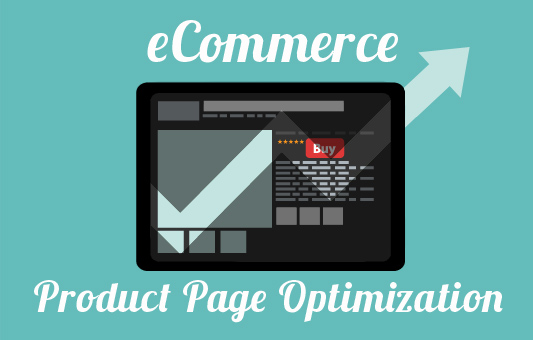
Designing Product Pages
Unlike bricks-and-mortar stores, ecommerce businesses like yours face a particular challenge in closing the sale: Your customers can’t hold and feel the products they’re shopping for. Instead you have to create a compelling shopping experience with words and images.
While you don’t want to clutter your product pages, customers expect to see certain things when they’re shopping. From product descriptions to images and even shipping policies, each element can help or hurt conversion. Here a few basics you’ll want to pay close attention to when designing your pages.
Product descriptions
The key to product descriptions is to deliver the necessary information – quickly. For customers trying to determine if the product is right for them, give a quick bulleted list of the products main selling points & features, so they don’t have to reading through 3 paragraphs to find the answer. Below the bulleted list you can list more detailed information for customers who are interested in learning everything about the product.
Detailed product descriptions not only help with SEO, they can also help close the sale. It’s worth spending some time on these.
Focus on keywords: Make sure both external and internal searches turn up the right products for your shoppers.
Include long tail keywords: “Men’s turtlenecks” is accurate but weak; “Imported men’s long sleeve Merino wool turtlenecks” is more like it. Think the way searchers do and write accordingly.
Write it yourself. Using the manufacturer’s product description may save you time, but it’s can be a mistake. Why? Because other sites are using the exact same copy. (Just Google a specific line of it and see what turns up.) Differentiate yourself by writing your own copy, hiring a professional or, at the very least, heavily reworking the manufacturer’s.
Reviews
There’s a reason Consumer Reports has been around since 1936: Consumers want reliable information that’s not influenced by the manufacturer or seller’s interests. In fact, more than 60% of consumers report reading reviews online before making a purchase, and a consumer-written review is 12 times more likely to be seen as more trustworthy than the manufacturer’s review or product description.
Invite reviews from customers via email after they’ve purchased your product, or offer free samples and ask takers to post a review.
If you got ‘em, flaunt ‘em. First give a visual summary of your reviews, like the number of reviews, along with stars or a small graph touting your average score. Further down, you can provide the full reviews and commentary.
And don’t be afraid of bad reviews now and then. Nearly 70% of consumers say they trust reviews more when they’re not all good. (See this blog on Reputation Management for more info.)
Images
Again, because your customer can’t touch what they’re shopping for, images are critical in pushing towards conversion. The more images, the better. Be sure to include:
Big and bold feature images. Big, eye-catching images help direct your shopper’s attention and boost your click through rate.
Rotating 360-degree view and zoom function: Let the customer see the product up close, from all angles.
Alternate images showing different colors, uses, and value-added parts and accessories.
Videos to demonstrate the product in action—these keep shoppers on your site longer and help increase conversions.
Price and cost savings
People love getting a good deal, and we even shop by price and savings. One of the first questions shoppers ask is “How much?” Give them an answer they’ like by:
Prominently displaying the product’s original price and its final discounted price.
Showing the savings as both a dollar figure and a percentage. Saving a few dollars is great, but getting 50% off feels even better.
Offering loyalty savings rewards; show on the page how much your customer has saved or accumulated.
Delivery
Customers want fast and free shipping. It’s not always possible to give them both, but do whatever you can to make the shipping and delivery process as pleasant as possible.
If you offer free shipping, make the button huge. The number one reason for shopping cart abandonment is high shipping charges. Everybody loves free shipping, and they’ll even add items to their purchase to get it.
Give shipping options: Customers feel more in control of their spending if they can choose standard shipping, priority mail, or overnight delivery, or even in-store pick up.
Display the expected delivery date: Clearly display your delivery guarantee and make sure you’re never late.
Other elements that help conversion
Wish lists: The most actionable feature after the “Buy” button, the Wish List gives you a way to hang onto that shopper until they become a buyer.
Added Products: List required items that are sold separately, like batteries or a cover, and related items, like throw pillows that match the comforter set.
Stock availability: If something’s out of stock, show when it’ll be back. Again, hang onto that shopper.
Obvious call-to-action buttons. Make them impossible to miss, and make it clear what the action is: “Buy now,” “Click to order” or “Pick a size.”
Product Upsells: Show related products or accessories. Use the 60 x 60 rule: 60% of people will buy an upsell up to 60% of the original price.
As we discussed in our blog on optimizing checkout, your sale is not made until the customer clicks “confirm order” and sits back with a satisfied smile. Design your product page to flow smoothly, answer your customers’ questions before they ask, and keep them moving towards conversion. Contact us today and let us help shape your pages.


